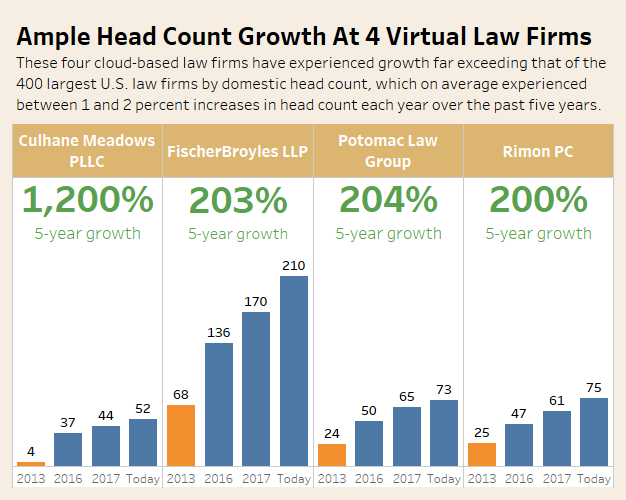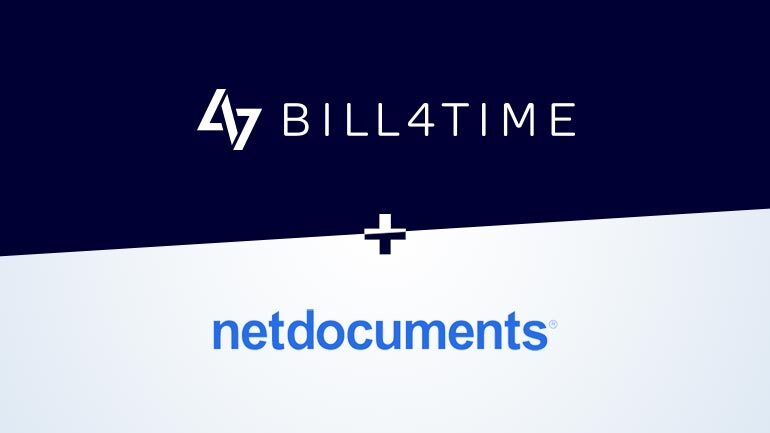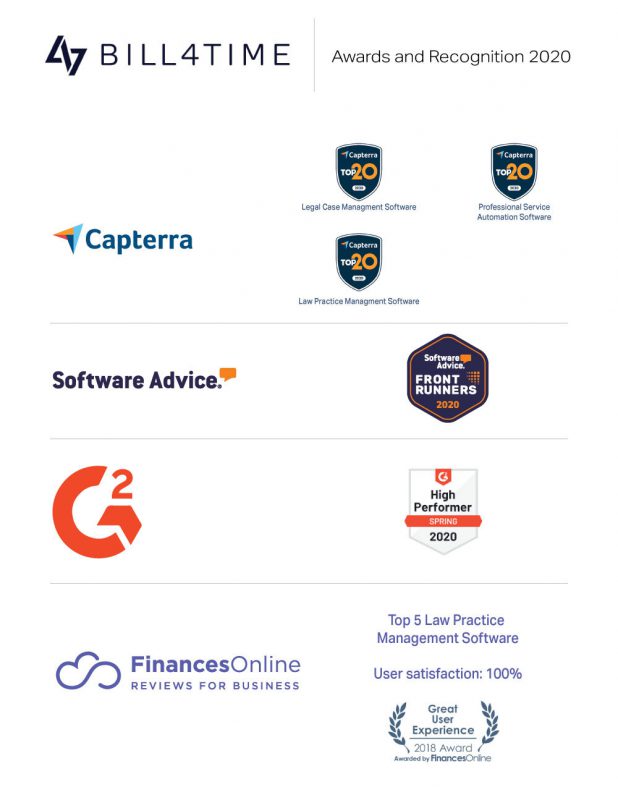I didn’t get the outcome I wanted, so I’m not going to pay you.
Sound familiar? Law firm McCarter & English sued their client to collect $2 million in legal fees from a client who lost at trial. It’s a scenario that’s replayed daily throughout the country.
When it comes to legal billing, many firms are focused on a variety of details. What should be included in our billing template? Which billing increments should be used? Are write-downs necessary here? These questions are important but they’re not as important as the high-level details that dictate whether you’re paid for your hard work or not.
Successful legal billing begins with consistent communication
What does communication have to do with realization rates or getting paid? According to the Legal Trends report, 44 percent of law firms list a client’s inability to pay all at once as the most common reason for nonpayment. Firms also state that 31 percent of clients pay late even when they have the funds.
Patrick Lamb, Partner at ElevateNext Law, shared his thoughts on this phenomenon.
“Firms increased their rates and clients responded by paying less. This finding reflects a fundamental disconnect between firms and their clients. Clients obviously do not believe they are getting fair value for the fees charged. Increasing rates is not going to change that view: indeed, continued price increases will only exacerbate the problem.”
The real problem? Neither party wants to communicate. Clients are skeptical that communication will produce any meaningful change, so they ignore their firm’s invoice and pay what they want. Firms continue to increase their rates to reduce the overwhelming pressure they face.
What pressure?
- Competition. Competing law firms are looking for a way to steal business. In times when demand is down for law firm services, firms begin fighting for a shrinking piece of the pie.
- Disloyalty. Partners choose to hoard their clients, matters and files in an attempt to control the amounts they’re able to bill. Some firms attempt to increase their rates in an attempt to compensate for partners with a significant amount of leverage.
- Poor utilization rates. Research shows attorneys bill for less than 30 percent of their workday, but they only collect on 20 percent of their time.
- Financial loss. Many firms increase their rates to compensate for losses due to poor realization, billable leakage, reconstructive billing and nonpayment. A consistent trend of discounts, write-downs and write-offs has taken its toll.
Allison Shields, consultant at Legal Ease Consulting, reinforces my point about communication and explains why realization should be your firm’s focal point.
“When lawyers write off or write down their fees — or when clients pay only a portion of the lawyer’s bill, aren’t both lawyer and client saying that the hourly fee really doesn’t mean anything, and that there is a particular (fixed) fee that is ‘fair’ for the work?”
How does communication solve this problem? Clients and firms are afraid to tell each other the truth. For example, firms are afraid they’ll lose profitable or marquee clients by stating they want more money. Clients are afraid they won’t receive help from anyone if they’re honest about the amount they’re willing or able to pay.
Why law firms need a legal billing checklist
A legal billing checklist is a helpful way to boost realization rates. A checklist gives you the upfront time you need to identify the strategy, tactics, tools and resources needed to produce the outcomes you want, even if clients are unwilling to state their needs explicitly. Wait a minute, wasn’t this post about legal billing? Absolutely.
A legal billing checklist helps your law firm:
- Identify (and reset) client expectations ahead of time
- Provide you with the intel and leverage you need to keep clients happy and realization rates high
- Troubleshoot billing and realization problems ahead of time
- Spot legal billing headaches and problems before they metastasize into delinquent payments
Solve these problems ahead of time, and you increase your realization rates naturally. Let’s take a look at the various items in this 16 point checklist.
| Task/to-do | Why it’s important |
| Client screening protocols | Some clients won’t be interested in paying for your services at any cost. These protocols identify and sort your ideal and dysfunctional clients. This simple step is taken for granted, but it’s an easy way to boost your firm’s realization rates. |
| Set billing point of contact(s) | You’ll need to identify key decision-makers, influencers and promoters who can get things done in your client’s organization. |
| Identify relationship builders | The more you invest in a relationship with your clients (and key people in their organization), the easier it will be to address billing problems and improve your realization rates. |
| Identify billing expectations | Your clients have a hidden set of fuzzy, implicit and unrealistic expectations. Identifying these expectations gives you the leverage you need to ensure they’re happy. Why do expectations matter? Missed expectations are the root of all unhappiness. |
| Reset/update billing expectations | An awareness of your client’s expectations provides you an opportunity to reset/update them (via your fee agreement), so they’re in-line with reality. This reset prevents the relationship from going sour due to financial misunderstandings. |
| Create AFA matching protocols | If you’re consistently discounting your fees, a fixed fee arrangement may help restore profitability in your firm. Client misbehavior is often an indication of an AFA mismatch. AFAs can be used creatively to boost client responsiveness, boost firm realization rates and increase profit per partner/employee. |
| Set unexpected billing protocols | Sending clients a large bill with an unexpected dollar amount is a surefire way to trigger a billing dispute. Unexpected billing protocols outline how you go about making the unexpected easier for clients to handle. |
| Create a discount reduction plan | Discounts erode law firm profits. The reason is simple. Clients want your services. They don’t want your bill. A discount reduction plan provides you with helpful tools you can use to increase realization rates across your firm. |
| Add nonfinancial payment incentives | If you’re looking for ways to motivate clients to pay on time, nonfinancial incentives (e.g., bonuses, events, workshops, connections, luncheons, favors, etc.) are a great place to start. These incentives provide you with the precious income your firm needs by addressing non-monetary wants. |
| Set communication intervals | How often should you communicate with your clients regarding their matter? Regarding your bill? (hint: a 5:1 positive/negative ratio is ideal) However, you’ll need to identify the communication interval that works best for your firm. |
| Contemporaneous tracking tools | Your timesheets should be treated as inventory. Every line item is a unit of revenue for your firm. You’ll need to identify the time tracking tools that enable timekeepers in your firm to track their time as-it-happens. |
| Verify timekeeper entries [daily] | Are your timekeepers following best practices? Which timekeepers are tracking their time (billable and nonbillable) daily? Are their time entries descriptive and accurate? Are they adding time entries as-it-happens or at the end of the day? Accurate time tracking is crucial for a variety of reasons – it’s how most firms are paid, it helps firms measure their utilization rates |
| Outline billing confirmation/compliance | Complying with your client’s billing guidelines is an easy way to ensure your invoices are paid fully and on time. Client billing guidelines can be hit or miss. This means you’ll need to supplement client billing guidelines with your own. You’ll want to track actions that are required or forbidden. You’ll also want to identify stop words that flag your invoices for review. |
| Create billing follow-up systems | When are clients reminded about your invoice? How many reminders are sent? Are they sent via phone, email, text? You’ll want to outline the follow-up systems needed for your invoices. It’s also a good idea to identify the point of contact responsible for reaching out to each client. The attorney handling their account is ideal, but you’ll need to determine what’s best for you. |
| Set client termination protocols | When should you terminate your relationship with a client? How many payments can be missed? What are the conditions or criteria that need to be met before termination takes place? You’ll need to identify key dealbreakers ahead of time. |
| Set collection activity protocols | When and how do you initiate collections activity? What specific steps should be taken? How do you notify your client? Determining the when and how of collections activity removes much of the emotion from your client relationships – especially if you provide clients with written, upfront communication. |
Wait a minute. This list of to-dos, they’re all focused on processes rather than legal billing! Why on earth would it be important for law firms to focus on their process rather than billing?
A well-designed process prompts communication
Communication is the common thread with each of these to-do items. Here’s why it’s important. Your prospects and clients expect your communication, billing and fee breakdowns to meet these four criteria.
- Financial alignment. Your clients want to see that your financial interests are aligned with theirs. It’s hard to maintain trust if your firm gets paid regardless of your client’s outcome. Alignment equals trust.
- Transparency and communication. Surprising clients with a significant variance, relying on block billing and other dishonest practices create ambiguity, increasing distrust.
- Expectations calibration. Are clients looking for an hourly, fixed fee, or retainer arrangement? Do they have the upfront funds needed to pay for your services? You’ll need to calibrate your client’s expectations before.
- Value over price. When clients ask about price, they’re often actually asking about value. They’re often looking for a value breakdown, a demonstration of your firm’s exceptional ability. They want an answer to the question, “are you giving me more than I’m paying you?“
Using this checklist, your firm can troubleshoot billing and realization problems ahead of time, before they metastasize into excessive discounting, consistent write-downs or delinquent payments. Your profit and realization rates go up naturally as a result of the upfront preparation you’ve done in your firm.
Communication is the key to legal billing success
Standardizing a process holds your firm accountable to a specific and repeatable set of standards. These processes are important because most firms without them are in a race to the bottom. They increase their rates; clients respond by paying less — which only exacerbates the problem.
Focus on communication. Use a well-thought-out process to align your interests with those of your clients. Iterate consistently – focus your attention on overdelivering value. With a structured process and a clear set of guidelines to follow, your firm’s revenue and realization rates will climb naturally, no rebellious clients required.



